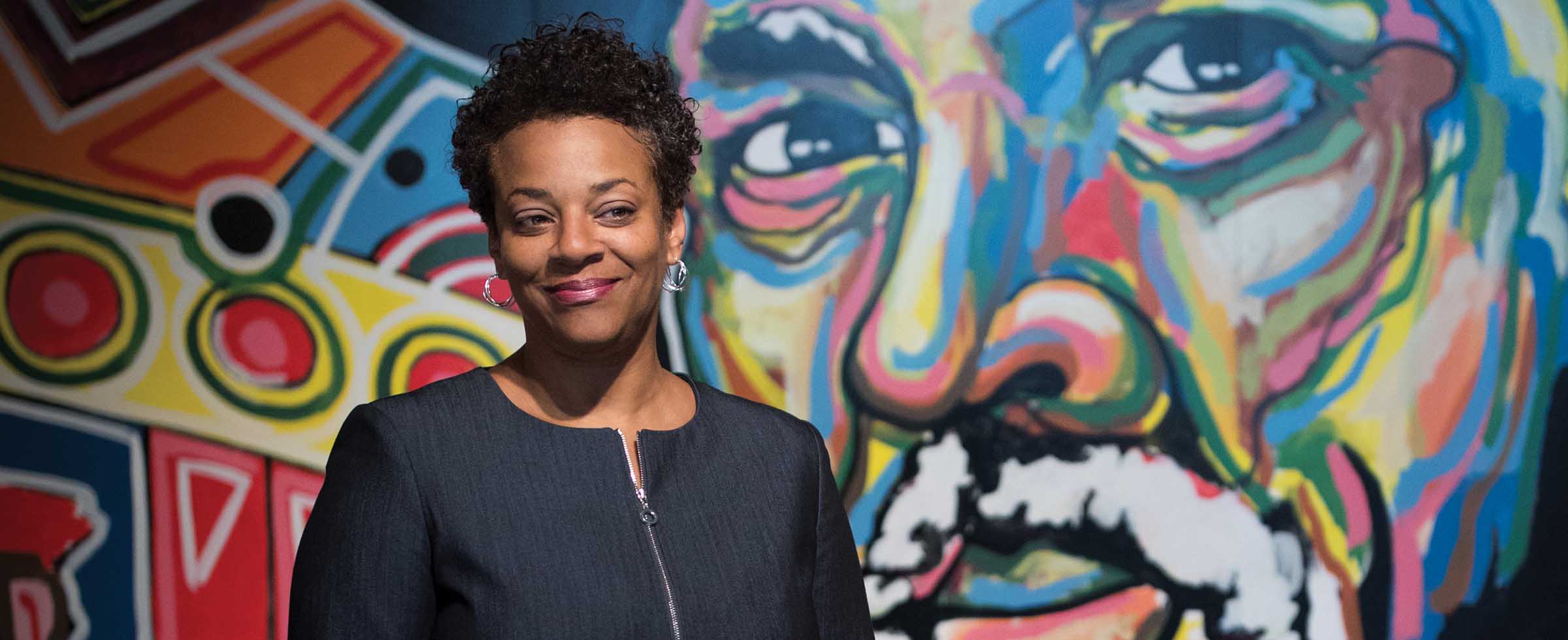The August Wilson Center reborn

JAZZ VOCALIST GREGORY PORTER opened the August Wilson Center’s latest performance season to a full house. The 472-seat theater was packed again for “Sancho: An Act of Remembrance,” a one-man play starring British actor Paterson Joseph. Rhythm and blues artist Marsha Ambrosius sold out the room, as did singer-songwriter Eric Roberson.
The Downtown center named for Pittsburgh’s most celebrated playwright is alive again, resurrected from bankruptcy and reopened as the premier regional showcase for African American art. Foundations, local government and community stakeholders have rallied around it with funding and arts management expertise to plot a new course that will preserve its mission for the long term. In the past 18 months, business-skilled community leaders have joined the board overseeing all operations, the Pittsburgh Cultural Trust has taken on basic management and some programming, and The Pittsburgh Foundation has established a fund to support cultural and educational productions.
In addition, August Wilson Renewal, an organization that grew out of the community group that led the public protests against selling the Center to a hotel chain, is expected to be an engine for new programming. The board, led by Judge Joseph K. Williams of Allegheny County Common Pleas Court, ranges from attorneys to artists of all stripes.
“[The Center] is a special opportunity to tell a story that is typically missed: the rich cultural life of the African American community,” says Michael Polite, president and CEO of development company Ralph A. Falbo Inc., who was appointed to the Center’s governing board last year.
The Center originally opened in 2009 to a lavish celebration of a new building and high expectations. But looming beyond the party was a grim financial outlook: construction costs had nearly doubled, the region was reeling from the worst recession in nearly six decades and ticket sales were poor. Four years later, it was forced into foreclosure and closed.
The Pittsburgh Foundation, The Heinz Endowments and the Richard King Mellon Foundation, with support from the city of Pittsburgh and Allegheny County, bought the Center out of bankruptcy in 2014 and freed it from debt. Three African Americans with legal and financial expertise were recruited to the board—Polite; Richard Taylor, CEO of lighting supplier ImbuTec; and Tracey McCants Lewis, an assistant professor in Duquesne University’s Law School.
“My heart goes out to the people who [previously] poured their hearts and souls into trying to make this work, because they really were working against gravity,” says Taylor. “We now have the enviable position to be able to look forward without that debt.”
The Pittsburgh Cultural Trust, which manages five successful Downtown production venues, was hired to bring that experience to the Center. Its roles include handling production basics and booking national programming.
Trust staff organized the current season that has reliably filled the Center’s seats. “Now, I make an announcement before every performance: ‘People.….get your tickets when they first go on sale or you’ll be left out,’ ” says Janis Burley Wilson, the Trust’s vice president and director of strategic partnerships and community engagement. “I attribute the season’s success to the fact that we’re presenting shows that people want to see and getting the word out in ways that are inclusive.”
The Center’s board members believe that their top priority is to sustain a pipeline of programming consistent with the Center’s mission and also popular across a range of audiences. Local engagement also is important: The Pittsburgh Foundation runs an annual grants competition, awarding $300,000 each year to spur local programming. A winner this year is Silver Eye Center for Photography, which will exhibit the work of MacArthur Foundation Fellow LaToya Ruby Frazier, whose photographs and video tell the story of Braddock, her hometown.
The second priority is to build a reliable resource engine to operate the programming pipeline. “We have to do the due diligence to expand the revenue stream beyond foundation and government support,” Taylor says.
The board also faces the challenge of determining a long-term plan for governing the Center. “I don’t think the foundations intend to own and operate the Center in perpetuity,” says Maxwell King, The Pittsburgh Foundation’s president and CEO. “Some other construct has to emerge.”
In the meantime, the work of August Wilson is enjoying a surge of optimism and attention. In January, Academy Award-winning actor Denzel Washington and HBO announced he would direct Wilson’s “Fences” as a film, which promises to expose Wilson’s body of work
to a broader, younger audience.
The need to celebrate the tradition that Wilson represents has always been the primary motivation for investing in the Center, says King. “There is an incredibly powerful tradition for African American art here, which should be compelling to the whole Pittsburgh community. It was a big idea coming out of the African American community to capitalize on that legacy. Pittsburgh is a place that is given to embracing big ideas, and we want a big, bold idea like this one to succeed.”
Original story appeared in the 2015-16 Report to the Community




